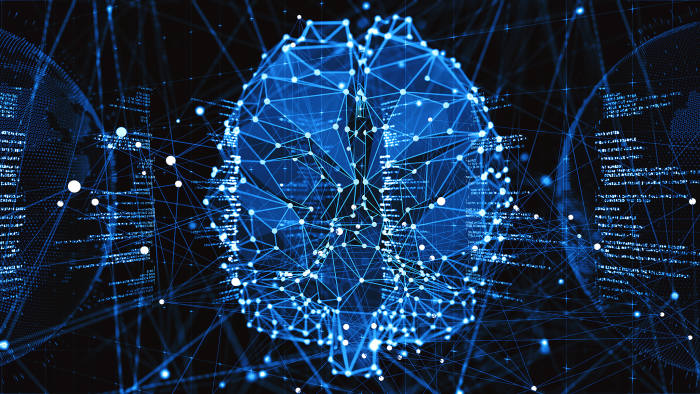Types of data sets for Deep Learning

Deep Learning is important because of its ability to process a large number of features, especially when dealing with unstructured data like social media. However, Deep Learning requires access to a vast amount of data to be effective. The models can be successful only when a large amount of data is used.
The Introduction to Deep Learning with Keras course offers you an understanding of Keras while giving you an overview of Deep Learning and the various data sets used. The Deep Learning with Keras free online program gives you proficiency in data pre-processing and the use of Keras while optimizing neural networks.
Deep Learning with Keras
Deep Learning is a Machine Learning technique that teaches computers to imitate humans. While traditional Machine Learning algorithms are linear, Deep Learning algorithms are stacked in an order of increasing complexity. It is essentially a neural network with multiple representations of three or more layers.
What is Keras
Keras is a Python library for Deep Learning that runs on top of TensorFlow or Theano. The purpose is to implement Deep Learning models speedily for research and development. It was developed by a Google engineer using the underlying principles of modularity, minimalism, extensibility, and native Python. Keras runs on Python 2.7 or 3.5 and can execute on GPUs and CPUs.
Why is it used in Deep Learning
There are many Deep Learning frameworks available, but Keras is preferred because it emerges favorably in comparison to others. Keras is easy to learn and use. It has broad adoption across the research and enterprise communities and in every vertical. You interact with features built using Keras in your everyday lives, like Netflix and Uber.
Remarkably, Keras is an API “designed for human beings, not machines.” It follows best practices that reduce the cognitive load; by offering dependable APIs, minimizing user actions for common applications, and offering feedback upon user errors. These features make it very productive, enabling speed during Machine Learning tasks. As Keras integrates with TensorFlow features, it helps build workflows to customize any set of functions.
This is why Keras is ranked the number 1 framework for Deep Learning projects.
Types of Datasets for Deep Learning
Machine Learning models use data sets at various stages of the development lifecycle. As the models need to be exposed to various data inputs for maximum accuracy of the outcomes, data sets emerge as a critical part of the process. The data inputs are split into several steps, and each model has to be exposed to each step before final implementation.
Each data split configuration yields Machine Learning models with different performances. For instance, where models are based on the entire data, what you have is the training data. And the model performance is tested on a random data set taken from the training sample data set. When data is split into two, the training data set is used to fit the model and the validation data set is used for evaluating model performance. However, when data is organized in three splits, you train the model using the training data set, check the performance using the validation data set, and optimize the model performance using both training and validation data. Finally, the general performance of the model is assessed using the testing data set. The latter is the most optimal model-building scenario.
1. Training Data set
Machine Learning and Deep Learning have some amazing applications where processes are automated for powerful insights from text data. Documents, surveys, social media, customer support tickets, emails and so on, are processed for insights. However, you first begin with training data to make sure that your models work successfully.
Deep Learning models depend on training data sets. They cannot perform without high-quality training data.
The training data set is the first set of data used to train your Deep Learning model. It is the initial data used to develop the model, from which the rules are created and refined for subsequent development. The training data consists of input examples that the model is fit into. Data sets are fed to the Deep Learning algorithms to train the model to make predictions or perform a given task. Various parameters like weight, height, etc., are adjusted, and the model is trained using the training data.
All training data use supervised or unsupervised learning. You use labeled or annotated data in supervised learning and unlabeled data in unsupervised learning to recognize patterns or make inferences. Sometimes, a combination of supervised and unsupervised learning is used to train hybrid models.
Training data establishes the tone for future applications of the model using the same training data.
2. Validation Dataset
The second stage of model building involves the evaluation of model prediction, so you learn from mistakes before validation of the data sets. It helps Machine Learning engineers to understand the accuracy of model output and tune the hyperparameters based on the evaluation.
A validation data set is thus a sample of data that is held back from training the model and is used as an estimate of model skill to decide upon the tuning of the model’s parameters. The skill on the validation dataset is fit into the model configuration.
So while you train the model using the training data set, you evaluate the model performance using the validation data set. Usually, the training and validation data sets are split in a ratio of 80:20, where 20% of the data is kept apart for validation purposes. The ratio may change based on the size of the data set. For instance, where the size of the data set is very large, the validation data may be as small as 10%.
3. Testing Dataset
This data set type is the final stage in a model’s evaluation, as it moves through the stages of training and validation to testing. This step is critical to generalize and test the working accuracy of the model. The engineer will not expose the models to the testing data set until the training segment is fully completed to avoid any bias.
Although the accuracy of the model is evaluated through the validation data sets, it is only when a model is fully developed that it can be tested for accuracy with testing data. The testing data set remains hidden during the model fitting and performance evaluation stage. The data can be split in the ratio of 70:20:10, where 10% of the data set is the test data for evaluating the model performance.
How to create Deep Learning data sets
The data set you use for your Deep Learning models can affect the performance of your applications. For example, a data set that contains plenty of biased information can decrease the accuracy of your Machine Learning model.
There are some standard steps that you must take when creating data sets.
They are:
- Identifying your goal
- Selecting suitable algorithms
- Developing your data set
- a) using data collection strategies,
- b) identifying the correct data annotation methods,
- c) optimizing the same,
- d) cleaning up the data set, and
- e) monitoring the model training.
Ultimately, model building depends on the data sets, and it is necessary to learn how to create the various types of data sets for your deep learning model.






